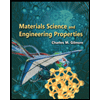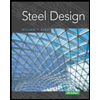
Structural Analysis
6th Edition
ISBN: 9781337630931
Author: KASSIMALI, Aslam.
Publisher: Cengage,
expand_more
expand_more
format_list_bulleted
Question
![Consider the truss shown in Figure 2. Two loading cases are applied to
the joints: (1) approximately 4 kg of load applied at joint "E", (2)
approximately 2 kg of load applied at joint "D" and approximately
another 2 kg load applied at joint "F".
The trusses have six load cells attached to the struts, as depicted in
Figure 2 by the shaded rectangles 1-6. The struts are connected
through hinges at the joints. Please observe the lab carefully and
record data from the loading cells.
(a) Construct a 2-D Free Body Diagram (FBD) for the entire truss in
Figure 2 and calculate the supporting forces at point "A" and point "I"
for these two cases. According to the calculation results of the two
cases, discuss the impact of loading location.
[20%]
(b) Using the method of sections, calculate the forces in the struts with
the load cells (1-6) attached for these two cases.
[20%]
(c) Tabulate the results of both the calculation and the measurement
for the two cases. Provide a short discussion of the experimental
laboratory for the truss in Figure 2 (half a page maximum) and
compare your analytical results at load cells (1-6) with the
experimental measurements for the two loading cases.
[10%]
B'
E
H
180mm
180mm
180mm](https://content.bartleby.com/qna-images/question/b2f3ef99-bbdd-42ad-90e3-a609a27c5d84/e8a30ce7-4a40-4d1e-8191-c6151b3a4023/vjz4jce_thumbnail.png)
Transcribed Image Text:Consider the truss shown in Figure 2. Two loading cases are applied to
the joints: (1) approximately 4 kg of load applied at joint "E", (2)
approximately 2 kg of load applied at joint "D" and approximately
another 2 kg load applied at joint "F".
The trusses have six load cells attached to the struts, as depicted in
Figure 2 by the shaded rectangles 1-6. The struts are connected
through hinges at the joints. Please observe the lab carefully and
record data from the loading cells.
(a) Construct a 2-D Free Body Diagram (FBD) for the entire truss in
Figure 2 and calculate the supporting forces at point "A" and point "I"
for these two cases. According to the calculation results of the two
cases, discuss the impact of loading location.
[20%]
(b) Using the method of sections, calculate the forces in the struts with
the load cells (1-6) attached for these two cases.
[20%]
(c) Tabulate the results of both the calculation and the measurement
for the two cases. Provide a short discussion of the experimental
laboratory for the truss in Figure 2 (half a page maximum) and
compare your analytical results at load cells (1-6) with the
experimental measurements for the two loading cases.
[10%]
B'
E
H
180mm
180mm
180mm
Expert Solution
This question has been solved!
Explore an expertly crafted, step-by-step solution for a thorough understanding of key concepts.
Step by stepSolved in 2 steps with 6 images

Knowledge Booster
Similar questions
- A beam is part of the framing system for the floor of an office building. The floor is subjected to both dead loads and live loads. The maximum moment caused by the service dead load is 45 ft-kips, and the maximum moment for the service live load is 63 ft-kips (these moments occur at the same location on the beam and can therefore be combined). a. If load and resistance factor design is used, determine the maximum factored bending moment (required moment strength). What is the controlling AISC load combination? b. What is the required nominal moment strength for a resistance factor of 0.90? c. If allowable strength design is used, determine the required moment strength. What is the controlling AISC lead combination? d. What is the required nominal moment strength for a safety factor of 1.67?arrow_forwardDetermine the smallest value of yield stress Fy, for which a W-, M-, or S-shape from Part 1 of the Manual will become slender. To which shapes does this value apply? What conclusion can you draw from your answer?arrow_forwardA W1422 acts compositely with a 4-inch-thick floor slab whose effective width b is 90 inches. The beams are spaced at 7 feet 6 inches, and the span length is 30 feet. The superimposed loads are as follows: construction load = 20 psf, partition load = 10 psf, weight of ceiling and light fixtures = 5 psf, and live load = 60 psf, A992 steel is used, and fc=4 ksi. Determine whether the flexural strength is adequate. a. Use LRFD. b. Use ASD.arrow_forward
- A tensile test was performed on a metal specimen having a circular cross section with a diameter 0. 510 inch. For each increment of load applied, the strain was directly determined by means of a strain gage attached to the specimen. The results are, shown in Table: 1.5.1. a. Prepare a table of stress and strain. b. Plot these data to obtain a stress-strain curve. Do not connect the data points; draw a best-fit straight line through them. c. Determine the modulus of elasticity as the slope of the best-fit line.arrow_forwardThe data in Table 1.5.3 were obtained from a tensile test of a metal specimen with a rectangular cross section of 0.2011in.2 in area and a gage length (the length over which the elongation is measured) of 2.000 inches. The specimen was not loaded to failure. a. Generate a table of stress and strain values. b. Plot these values and draw a best-fit line to obtain a stress-strain curve. c. Determine the modulus of elasticity from the slope of the linear portion of the curve. d. Estimate the value of the proportional limit. e. Use the 0.2 offset method to determine the yield stress.arrow_forward
arrow_back_ios
arrow_forward_ios
Recommended textbooks for you

 Materials Science And Engineering PropertiesCivil EngineeringISBN:9781111988609Author:Charles GilmorePublisher:Cengage Learning
Materials Science And Engineering PropertiesCivil EngineeringISBN:9781111988609Author:Charles GilmorePublisher:Cengage Learning Steel Design (Activate Learning with these NEW ti...Civil EngineeringISBN:9781337094740Author:Segui, William T.Publisher:Cengage Learning
Steel Design (Activate Learning with these NEW ti...Civil EngineeringISBN:9781337094740Author:Segui, William T.Publisher:Cengage Learning Engineering Fundamentals: An Introduction to Engi...Civil EngineeringISBN:9781305084766Author:Saeed MoaveniPublisher:Cengage Learning
Engineering Fundamentals: An Introduction to Engi...Civil EngineeringISBN:9781305084766Author:Saeed MoaveniPublisher:Cengage Learning


Materials Science And Engineering Properties
Civil Engineering
ISBN:9781111988609
Author:Charles Gilmore
Publisher:Cengage Learning

Steel Design (Activate Learning with these NEW ti...
Civil Engineering
ISBN:9781337094740
Author:Segui, William T.
Publisher:Cengage Learning

Engineering Fundamentals: An Introduction to Engi...
Civil Engineering
ISBN:9781305084766
Author:Saeed Moaveni
Publisher:Cengage Learning